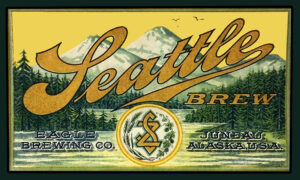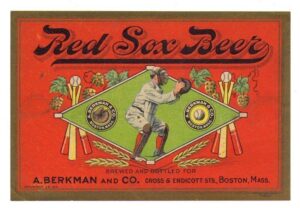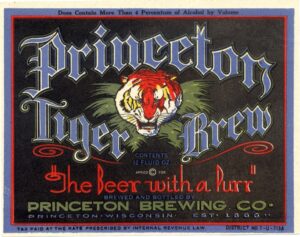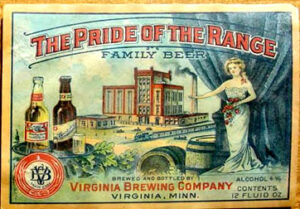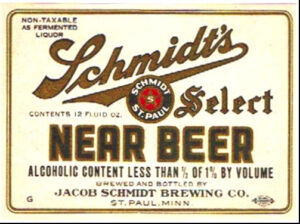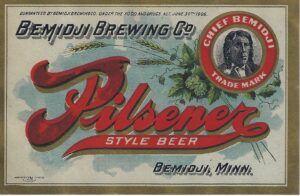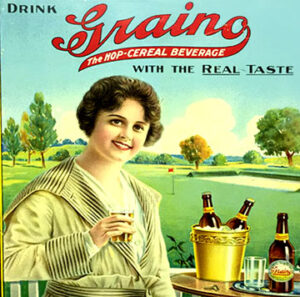 Bottles were once used for all liquids, before cans were invented. So, they were produced in mass quantities, and many survived. After they were used, they were dumped into privy pits (outhouse holes!) to be disposed of. These bottles had embossed lettering and details such as the company or bottler, and often the town in which they were filled. Before bottling machines were invented, they were filled by hand and sealed. A laborious process. They could be sealed with a porcelain stopper, which could have also been imprinted with a logo or information, and a wire bail to hold it onto the bottle top. A rubber washer was attached to the underside of these white porcelain stoppers, to prevent leakage and keep any carbonation. Sometimes, these printed stoppers (or bottlecaps) can have as much value as the bottle.
Bottles were once used for all liquids, before cans were invented. So, they were produced in mass quantities, and many survived. After they were used, they were dumped into privy pits (outhouse holes!) to be disposed of. These bottles had embossed lettering and details such as the company or bottler, and often the town in which they were filled. Before bottling machines were invented, they were filled by hand and sealed. A laborious process. They could be sealed with a porcelain stopper, which could have also been imprinted with a logo or information, and a wire bail to hold it onto the bottle top. A rubber washer was attached to the underside of these white porcelain stoppers, to prevent leakage and keep any carbonation. Sometimes, these printed stoppers (or bottlecaps) can have as much value as the bottle.
Labeled bottles began in the embossed bottle era. You’ll sometimes find early beer bottles with labels applied OVER the embossed bottle detail, or even stuck onto bottles that may not match the brewery. Because bottles were expensive or drinkers didn’t return their empties promptly, early breweries would fill any/all bottles they would get. In general, labeled bottles can be harder to find intact or in good condition. The labels were prone to being torn, ripped when placing them back in the wooden case and over time, the glue would dry out (especially on the small neck labels) and labels would fall off. You will often find an intact case of bottles with many of the labels having let go, and gathered in the bottom of the case. Don’t throw them out-beer geeks (us!) will find a way to reunite them with the bottles they fell off of.
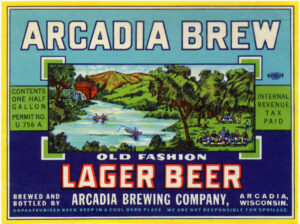 LABELS: There are many different ways that vintage labels survive. State alcohol boards would keep them in file folders for approval processes. Drinkers might soak the labels off bottles they drank. You can tell if they are “soakers” as they will often be rippled from the water used to free them from the bottle. And there have always been label collectors. They would write the breweries or label companies, asking for obsolete labels or samples. We’ve found these paper “time capsules” with all correspondence intact. They usually include polite and hand-written stationery from both parties, and are DATED, which helps greatly in determining the era. Or scrapbook pages filled with old labels. Don’t bother trying to remove them however. Leave that to us pros. With patience and time, it can be done!
LABELS: There are many different ways that vintage labels survive. State alcohol boards would keep them in file folders for approval processes. Drinkers might soak the labels off bottles they drank. You can tell if they are “soakers” as they will often be rippled from the water used to free them from the bottle. And there have always been label collectors. They would write the breweries or label companies, asking for obsolete labels or samples. We’ve found these paper “time capsules” with all correspondence intact. They usually include polite and hand-written stationery from both parties, and are DATED, which helps greatly in determining the era. Or scrapbook pages filled with old labels. Don’t bother trying to remove them however. Leave that to us pros. With patience and time, it can be done!
Here is a very GENERAL way to date a label:
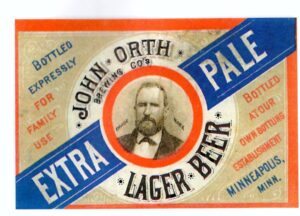 1860’s-1900: These are usually ornate, with script fonts and colorful graphics, Brewers usually had more generic names for their beer, like PILSENER,EXPORT,BOCK/PORTER or BOTTLE BEER. They may say CITY BREWERY as they may have been the only brewer in their town.
1860’s-1900: These are usually ornate, with script fonts and colorful graphics, Brewers usually had more generic names for their beer, like PILSENER,EXPORT,BOCK/PORTER or BOTTLE BEER. They may say CITY BREWERY as they may have been the only brewer in their town.
1908-1914: Might have MADE UNDER THE FOOD AND DRUGS ACT JUNE 30TH 1906 and then a serial number.
1912: Around this time, labels would start to have contents and alcohol content printed on their labels.
1908-1920: (Early prohibition era) Some states started Prohibition (no alcohol allowed) as early as 1908.By 1916, 25 states had joined in prohibiting alcoholic beverages. They may say CEREAL BEVERAGE or BREW or may state “Contains less then 1/2 of %1 alcohol”
1918-2: WWI era labels would say (in states that were allowed to still sell beer) 2.75% alcohol.
1920-1933:-If breweries wanted to stay in business, they branched out to selling ice, dry goods and non-alcoholic or near beers. They might end with an “O” Schlitz had Famo, Keeley had Graino, Pablo was brewed by Pabst,etc. Or, they may say BREW instead of beer.
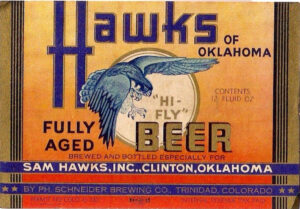 1928-1933: L permit labels-As Prohibition was nearing an end, breweries would use and L permit label. It would have the letter L followed by a number.
1928-1933: L permit labels-As Prohibition was nearing an end, breweries would use and L permit label. It would have the letter L followed by a number.
1933-36: U-permit labels-These would have the letter U followed by a number.
1933-1950: IRTP labels-If your label has TAX PAID AT THE RATE REQUIRED BY INTERNAL LAW or INTERNAL REVENUE TAX PAID, it was bottled during this time.
1950-1980’s ERA: No special wording was required during this time. Brewers started to use their zip codes around 1965 and IPC (those vertical striped price squares) began in 1973 or so. After 1989, Government warnings were printed on labels.
If you have a collection of labels, a single bottle you’ve found while remodeling the bathroom, or an old jar full of bottle caps, we are the guys that would love to hear about it. Our collections are built around folks like you that find and preserve brewing history!
